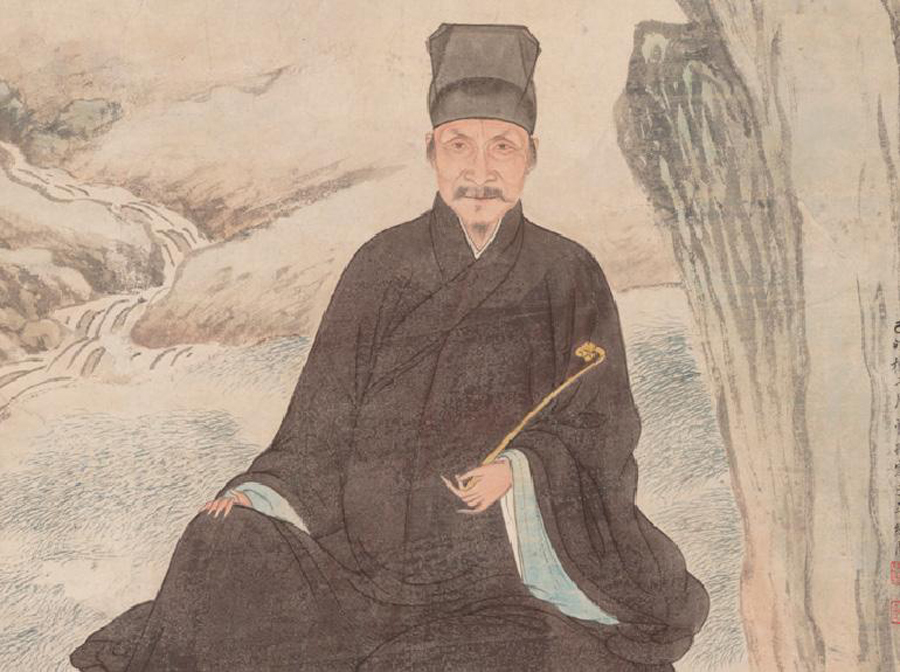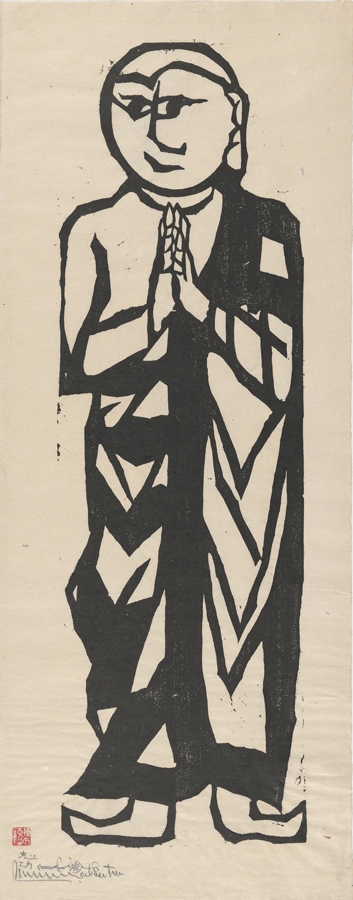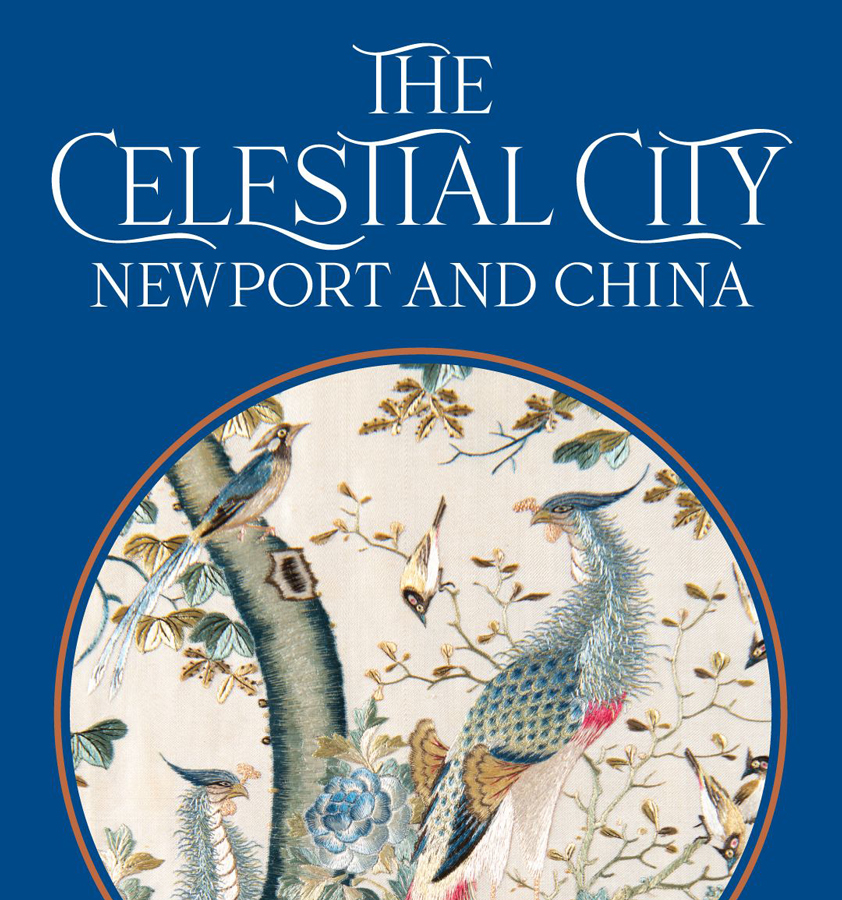Munakata Shiko, Rahula (Ragora), from the series Two Bodhisattva and Ten Great Disciples of Sakyamuni (Nibosatsu Shaka judai deshi), 1939/68; Courtesy Art Institute Chicago
Art Institute Chicago
Munakata Shikō and Buddhism in 20th-Century Japanese Prints
October 21, 2023 – January 7, 2024
In Japan, printing and Buddhism have long been closely linked. The earliest surviving prints date back to the 8th century; these were sacred texts that were placed within small wooden pagodas. Japanese printmakers continued to develop related imagery even after developing commercial forms of their work in the 17th century. Over the past 100 years, artists’ prints have become a significant way for individuals to express their beliefs by depicting Buddha, bodhisattvas, and other deities of the Buddhist pantheon. Foremost among 20th-century artists who drew upon Buddhist iconography for their subjects is Munakata Shikō, whose 25 prints are presented in this exhibition.
To learn more, click here.

Lai’an (Chinese, approx. 1250–1350), Fish and Waterweed, approx. 1300, Yuan dynasty (1271–1368), pair of hanging scrolls; ink on paper; Gift of the Tang Foundation; Courtesy Asian Art Museum
Asian Art Museum
Deities, Paragons, and Legends: Storytelling in Chinese Pictorial Arts
October 13, 2023 – July 8, 2024
This selection of paintings, textiles, and lacquerware illustrates well-known historical stories and love romances, tales of popular deities and heroic figures, and anecdotes of filial sons and celebrated scholars in Chinese art. For centuries, these fascinating images and their inscriptions were used to inform, entertain, and instruct various audiences, whether for religious persuasion, social engagement, cultural statement, or moral teaching. A showcase of these narrative or figural images in various mediums illuminates the deeply rooted visual cultural tradition that has existed in Chinese society across dynasties.
To learn more, click here.

Sonam Dolma Brauen (Swiss, born in Tibet, 1953), My Father’s Death, 2010 (detail), cloth and plaster, 49 cast-off monk’s robes, 2 vests, and 9 molded plaster tsa tsa, dimensions variable; Photo by Martin Brauen; Courtesy The Nelson-Atkins Museum of Art
The Nelson-Atkins Museum of Art
Sonam Dolma Brauen, My Father’s Death
October 28, 2023 – November 11, 2024
Personal biographies, political histories, and Tibetan Buddhist beliefs and practices inform Sonam Dolma Brauen’s sculpture My Father’s Death (2010). Born in 1953 in Tibet, Sonam and her family fled their homeland when she was a child. Assembled with robes donated by Tibetan monks and tsa tsas, molded objects used as votive offerings, My Father’s Death commemorates Sonam’s own father, Tsering Dhondup, who died a few years after the family came to India as refugees. The exhibition pairs Sonam’s work with Buddhist sculptures from Nepal and Tibet, offering visitors the opportunity to contemplate how concepts of consecration, relics, and commemoration are explored in Buddhist art and ritual practices across time.
To learn more, click here.

Kyungah Ham (b. 1966), What you see is the unseen / Chandeliers for Five Cities (detail), 2015; Photo by Hyunsoo Kim; Courtesy Philadelphia Museum of Art
Philadelphia Museum of Art
The Shape of Time: Korean Art after 1989
October 21, 2023 – February 11, 2024
Through the lens of 28 Korean artists, all born between 1960 and 1986, The Shape of Time: Korean Art after 1989 focuses on South Korea’s growing influence on the world stage and how the country continues to grapple with its past. The artists bend time—addressing the past, present, and future, sometimes all in the same work—and place to make sense of their complex cultural experiences. They reflect on the rapid urbanization and industrialization that shaped South Korea, unresolved political tensions with North Korea, the use of traditional techniques in contemporary art, the pressure to conform to societal norms around gender and sexuality, and their own resistance to these experiences. Many of the artists are well known in South Korea or have an international following, but others have not yet been properly introduced to audiences beyond Korea, especially in American museums, until now.
To learn more, click here.















